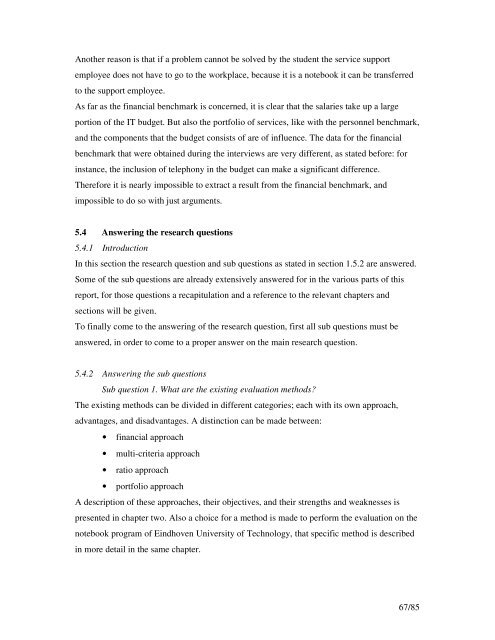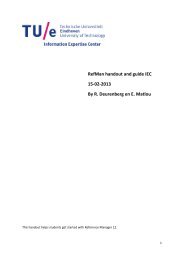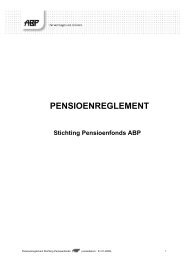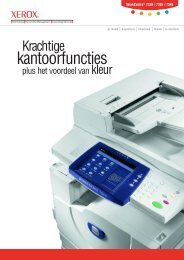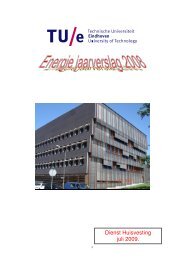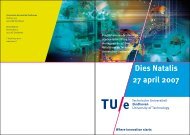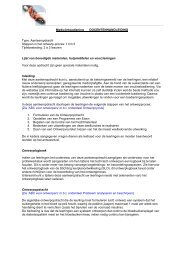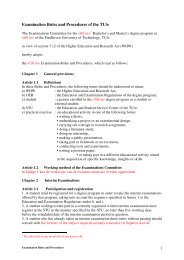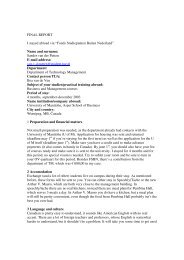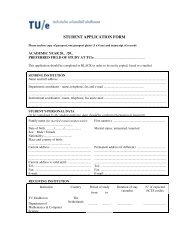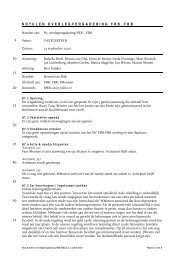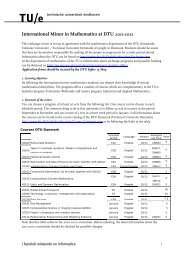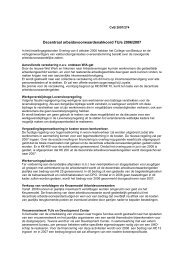TU/e notebook program - Technische Universiteit Eindhoven
TU/e notebook program - Technische Universiteit Eindhoven
TU/e notebook program - Technische Universiteit Eindhoven
Create successful ePaper yourself
Turn your PDF publications into a flip-book with our unique Google optimized e-Paper software.
Another reason is that if a problem cannot be solved by the student the service support<br />
employee does not have to go to the workplace, because it is a <strong>notebook</strong> it can be transferred<br />
to the support employee.<br />
As far as the financial benchmark is concerned, it is clear that the salaries take up a large<br />
portion of the IT budget. But also the portfolio of services, like with the personnel benchmark,<br />
and the components that the budget consists of are of influence. The data for the financial<br />
benchmark that were obtained during the interviews are very different, as stated before: for<br />
instance, the inclusion of telephony in the budget can make a significant difference.<br />
Therefore it is nearly impossible to extract a result from the financial benchmark, and<br />
impossible to do so with just arguments.<br />
5.4 Answering the research questions<br />
5.4.1 Introduction<br />
In this section the research question and sub questions as stated in section 1.5.2 are answered.<br />
Some of the sub questions are already extensively answered for in the various parts of this<br />
report, for those questions a recapitulation and a reference to the relevant chapters and<br />
sections will be given.<br />
To finally come to the answering of the research question, first all sub questions must be<br />
answered, in order to come to a proper answer on the main research question.<br />
5.4.2 Answering the sub questions<br />
Sub question 1. What are the existing evaluation methods?<br />
The existing methods can be divided in different categories; each with its own approach,<br />
advantages, and disadvantages. A distinction can be made between:<br />
• financial approach<br />
• multi-criteria approach<br />
• ratio approach<br />
• portfolio approach<br />
A description of these approaches, their objectives, and their strengths and weaknesses is<br />
presented in chapter two. Also a choice for a method is made to perform the evaluation on the<br />
<strong>notebook</strong> <strong>program</strong> of <strong>Eindhoven</strong> University of Technology, that specific method is described<br />
in more detail in the same chapter.<br />
67/85


